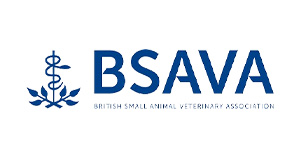Straightforward Calvings
Whilst there will always be calvings that are complicated and require a vet visit, and potentially surgical intervention, here are our top tips for getting the best outcomes from your calvings:
- Keep your cows at an appropriate body condition score (2.5 – 3) as they approach calving. Over conditioned cows have fat deposits within the pelvis, which leaves less room for the calf to pass through. Also ensure that your dry cows are fed appropriately to avoid milk fever issues, retained cleansings and metritis.
- Have a good handling system in place. Keep calving cows close by, with a suitable handling system so that one person can easily get a cow in and restrained to examine and/or calve. A good set up means that cows are more likely to be examined promptly if calving is not progressing. Early detection of problems will give a much better chance of a good outcome for both cow and calf.
- Hygiene. Keep calving areas as clean as possible, and clean out frequently. Also keep calving ropes and aids clean and disinfect between each calving. Good hygiene in the calving area will reduce the incidence of calf diseases in your herd, giving you better youngstock performance far into the future.
- Give them enough time. Once cows enter second stage of labour (abdominal contractions, water bag bursts and calf born) calving can take 75 minutes (up to 2 hours in heifers). As long as the calf is presented normally, allow the animal time to calve naturally. It takes time for the soft tissues around the birth canal to relax and stretch and pulling a calf out too quickly can lead to a torn cow as well as a calf that takes a long time to get up and going. Look for obvious progress each 30 minutes.
- Put a head rope on! If you are faced with a calving that requires assistance to bring legs or head around, putting a head rope on ensures that you can control the head position as the calf comes up into the birth canal and makes assisting the birth much more straightforward.
- If in doubt, call the vet. If you are unable to correct an abnormal presentation, or there is not progress within 30 minutes call for advice or assistance. The longer a cow is calving the more likely you are to have a dead calf and a cow that struggles post calving.
- Check for another calf. Always check for another calf. Twin pregnancies are far more likely to need assistance at calving and occasionally cows can carry triplets or even quads to term. Second calves can sometimes be quite far down in the uterus, so if you are suspicious that the first calf is small don’t be afraid to go back and check again for another calf in 30 minutes, once the uterus has contracted a bit.
- Give the cow plenty of fresh water and palatable food straight after calving. Cows can drink 3 or more large buckets within a few minutes of calving and providing easy access to this will ensure that she gets the best start to her lactation.
- Give any cow that you have assisted pain relief. A comfortable cow will spend more time being mobile, eating and drinking. This makes her much more likely to avoid problems with negative energy balance that can lead to ketosis and potential LDAs. Also consider if antibiotics are required if there are large tears, or a dead calf.
- Colostrum colostrum colostrum. Ensure that the calf gets sufficient colostrum promptly after calving. Aim for 3L straight after calving and 3L 6 hours later. This should ideally be from their own dam and needs to be clean and of good quality. If you store colostrum always check the quality before storage, label it with cow ID and make sure that you only use colostrum from cows with repeated negative Johnes test results.











